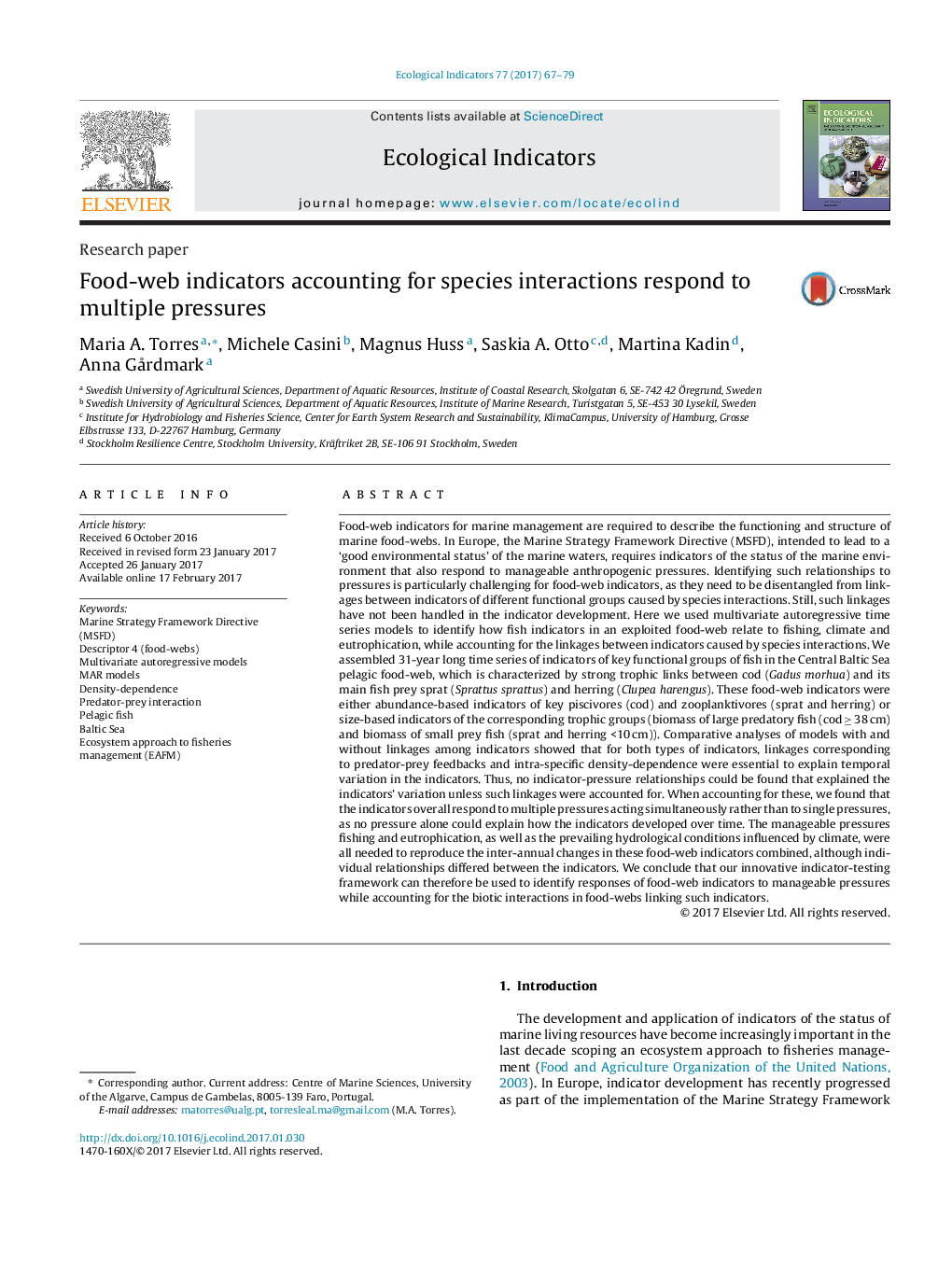| کد مقاله | کد نشریه | سال انتشار | مقاله انگلیسی | نسخه تمام متن |
|---|---|---|---|---|
| 5741711 | 1617125 | 2017 | 13 صفحه PDF | دانلود رایگان |
Food-web indicators for marine management are required to describe the functioning and structure of marine food-webs. In Europe, the Marine Strategy Framework Directive (MSFD), intended to lead to a 'good environmental status' of the marine waters, requires indicators of the status of the marine environment that also respond to manageable anthropogenic pressures. Identifying such relationships to pressures is particularly challenging for food-web indicators, as they need to be disentangled from linkages between indicators of different functional groups caused by species interactions. Still, such linkages have not been handled in the indicator development. Here we used multivariate autoregressive time series models to identify how fish indicators in an exploited food-web relate to fishing, climate and eutrophication, while accounting for the linkages between indicators caused by species interactions. We assembled 31-year long time series of indicators of key functional groups of fish in the Central Baltic Sea pelagic food-web, which is characterized by strong trophic links between cod (Gadus morhua) and its main fish prey sprat (Sprattus sprattus) and herring (Clupea harengus). These food-web indicators were either abundance-based indicators of key piscivores (cod) and zooplanktivores (sprat and herring) or size-based indicators of the corresponding trophic groups (biomass of large predatory fish (cod â¥Â 38 cm) and biomass of small prey fish (sprat and herring <10 cm)). Comparative analyses of models with and without linkages among indicators showed that for both types of indicators, linkages corresponding to predator-prey feedbacks and intra-specific density-dependence were essential to explain temporal variation in the indicators. Thus, no indicator-pressure relationships could be found that explained the indicators' variation unless such linkages were accounted for. When accounting for these, we found that the indicators overall respond to multiple pressures acting simultaneously rather than to single pressures, as no pressure alone could explain how the indicators developed over time. The manageable pressures fishing and eutrophication, as well as the prevailing hydrological conditions influenced by climate, were all needed to reproduce the inter-annual changes in these food-web indicators combined, although individual relationships differed between the indicators. We conclude that our innovative indicator-testing framework can therefore be used to identify responses of food-web indicators to manageable pressures while accounting for the biotic interactions in food-webs linking such indicators.
Journal: Ecological Indicators - Volume 77, June 2017, Pages 67-79
